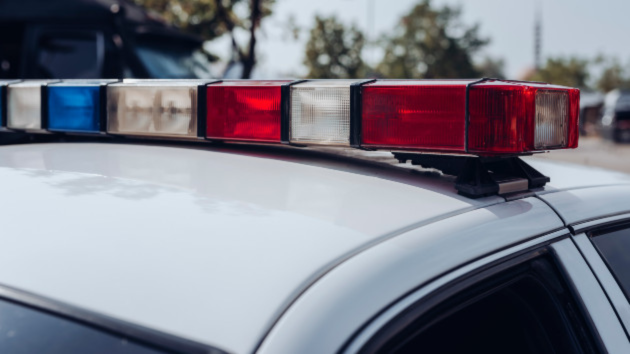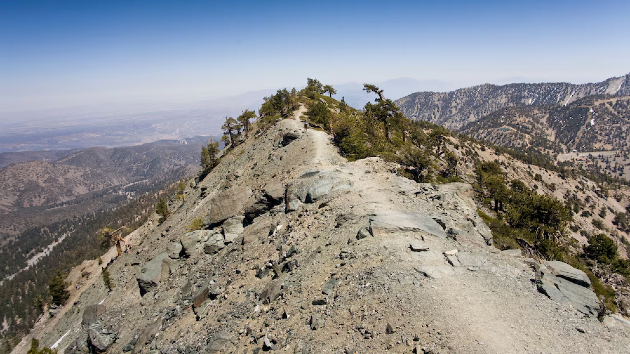How experts are trying to save the Florida panther
Written by ABC Audio ALL RIGHTS RESERVED on May 17, 2024

(TALLAHASSEE, Fla.) — The fate of the endangered Florida panther, also known as the North American cougar, could depend on a network of wildlife corridors and panther crossings currently being established by conservation groups and state officials.
The North American cougar once roamed throughout the southern U.S., Elise Bennett, Florida and Caribbean director at the Center for Biological Diversity, told ABC News. The species has even been documented as far north as Louisiana, Tiffany Burns, senior director of animal programs at ZooTampa, told ABC News.
The panthers have been confined to a small geographic area in southwest Florida after being hunted to near-extinction. The population is capped due to the limited amount to space to house them and a lack of safe passage elsewhere in the state, according to panther experts.
There are only about 200 panthers left in the wild. Experts say the only way for the species to recover is to expand their range northward.
“In order to get that panther population to grow and sustain, we need them to move further up the coast,” Burns said.
The goal is to create three separate panther populations with at least 240 adults in order to support the genetic flow of the species, according to the U.S. Fish and Wildlife Service, which listed the Florida panther under the Endangered Species Act in 1967. There is currently only one group in Florida.
The development of highways and roads in Florida has “bottlenecked” the panthers in an area south of the Caloosahatchee River, Bennett said.
Panthers are typically found in three counties in Florida: Lee, Henry and Collier counties, according to Brent Setchell, district drainage design engineer for the Florida Department of Transportation.
The Florida Department of Transportation has collaborated with researchers and wildlife conservation groups to build wildlife crossings across the state to allow animals like panthers, bears and deer a safe passage across roadways. These crossings are meant to deter animals from entering highways and more than 50 have been constructed since planning began in 1972. A new crossing at Interstate 4 near the State Road 57 interchange in Polk County is near completion and more than a dozen are in the works, Setchell said.
Cars are one of the biggest hazards to panthers, Bennett said. Thirteen panthers were hit and killed by cars in 2023, Burns said. At least 13 have been killed on roadways so far this year.
The Florida DOT decides where to build the crossings based on a number of factors, including wildlife cameras and information from the Florida Wildlife Corridor, a statewide network of 18 million acres of connected lands and waters. Finding funding can be a challenge, and the agency often relies on grants to complete the projects, Setchell said.
“One of the biggest challenges is the non-connecting conservation areas here in Florida,” Burns said. “That’s a huge initiative the Florida Wildlife Corridor foundation is actually trying to face.”
Panthers are solitary animals and extremely territorial. Males claim 200-square-mile territories and have been known to fight other males — sometimes to the death — if their territories overlap.
“If panthers are squeezed into an area that’s too small, they’ll fight each other and can even kill each other,” Bennett said.
Agencies have seen “great progress” for panther populations south of the Caloosahatchee River, Setchell said.
In 2017, panther researchers were delighted to document the first-ever panther in more than 40 years seen north of Caloosahatchee River, which flows from Lake Okeechobee to Fort Myers, essentially cutting the state in half. The female panther was leading her kittens through a wildlife crossing along Interstate 4, Setchell said.
Community planners in Florida, one of the fastest-growing states in the country, will need to consider wildlife before constructing new subdivisions and roadways to accompany them, experts said. A century ago, when traffic and human populations were much less dense, officials did not foresee the need for wildlife crossings.
“When one of these major highways needs construction, [engineers are] actually looking how they can put in a wildlife crossing while they’re doing the construction, because it’s gonna be a lot cheaper,” Burns said.
Learning how to live with panthers again as their populations grow will also be necessary, as panthers could target the prized horses that live on ranches in the north, Burns said.
But the success for panther conservation still faces many hurdles.
“We have a long way to go,” Bennett said.
Copyright © 2024, ABC Audio. All rights reserved.

 KVSP
KVSP 




